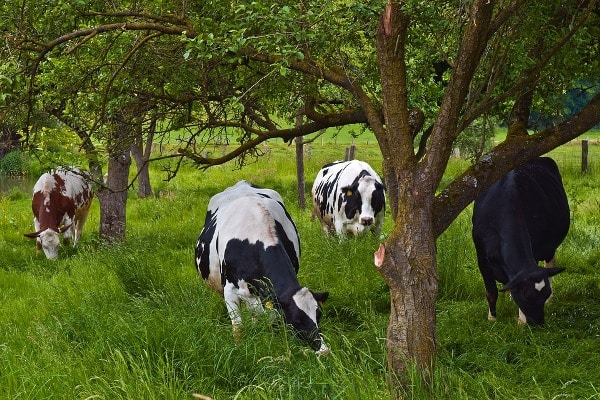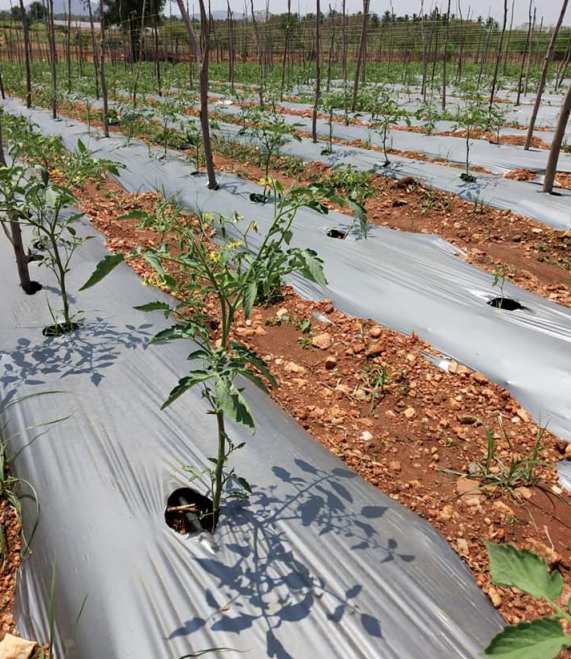Agriculture rural development challenges
Today, let us discuss the topic of agriculture rural development challenges in India and NABARD role in rural development.
Agriculture plays an important role in any economy. It is directly and indirectly connected with the economic activity, growth, and development of other sectors in an economy and on the whole welfare and development of an economy. Agriculture is one of production, both food for the rural and urban population and of cash crops for the export market, to earn foreign currency. In this procedure, demand is stimulated for other products and services, and employment opportunities emerge to absorb the society’s work-force. As the cycle develops, increasing agricultural production causes a growing demand for inputs, which ensure the resources essential to maintaining agricultural production. The land is an essential resource for most countries and the exploitation of that resource in the interest of its citizens is one of a country’s main responsibilities. Now let us get into details of principles and agriculture rural development challenges in India.
Agriculture and rural development
India is an agrarian economy and agriculture sector has still a lot of bearings on the overall growth and development of the country normally and rural development particularly. The economic division of agriculture to India’s gross domestic product (GDP) is declining with the country’s broad-based economic growth. Agriculture is demographically the broadest economic segment and plays a major position in the overall socio-economic fabric of India. Agriculture, with its allied sectors, is unquestionably the main livelihood provider in India, more so in the vast rural areas. 69% of India’s population lives in rural regions, and three-fourths of the people making up these rural populations depend on agriculture and allied activities for their livelihoods.
The main role of agriculture in economic development has been viewed as passive and supportive. Economic growth was seen as a mechanism requiring a rapid structural conversion of the economy from one mainly focused on agriculture behaviors to a more complex modern industrial and service sector. As an effect, the primary role of agriculture was to provide sufficient low priced food and manpower to the expanding industrial economy, which was thought to be a dynamic and leading segment in the overall strategy of economic development. Agriculture sector plays an indispensable part in any strategy of economic progress, particularly for low income developing countries.

Read: India Agro Based Industries Types.
Urban-rural relationships are generally multi-dimensional and evolving. The farm sector has long been providing food for the urban population but the composition of agricultural create has been changing in response to changing urban consumption patterns. The agricultural surplus is sold during commodity markets which, while always central to India’s rural economy, have undergone- rapid transformation in recent years. New commodities, the modernization of markets during commodity exchanges, futures trading and the emergence of organized retail strongly connected to farming, have brought the rural and urban closer.
Agriculture is the heart of rural livelihoods even though the agrarian economy has changed in several fundamental ways.
A World Bank review concludes that higher agricultural and rural growth rates are probable to have a ‘strong, immediate, and favorable impact’ on poverty and rural development.
Agriculture has a function to play in the poverty reduction, upliftment of standard of living of low and middle-class people and to the growth of rural areas because of most poor lives in rural and far-flung areas which have agriculture as the only source of living. It has been found that poverty in main developing countries is concentrated in rural areas; growth in the agriculture sector and in the rural economy has been highly helpful to reduce poverty. Agricultural growth is necessary to ensure national food security, alleviate poverty and reduce rural-urban disparities. About 70% of India’s population lives in rural areas and 69% of them depend on agriculture and allied activities with animal husbandry and fisheries for their livelihood. The rural areas are still home to a few percents of India’s billion people, a large number of whom are poor. The majority of the rural poor depend on rain-fed agriculture and fragile forests for their livelihoods.
Agriculture rural development challenges
Improve production efficiency, sustainability, and resilience:
Enhancing productivity as well as the capacity of plants, animals and production systems to adjust to a rapidly changing environment and climate with increasingly scarce natural resources. The resultant innovations will help to move towards resource-efficient agriculture and food and feed provide chains which consume fewer resources.
Deliver more public goods and ecosystem services:
Contributing to an improved understanding of the complex interactions between primary production systems and ecosystems services. Supporting the situation of these public goods and services during the delivery of management solutions, and the assessment of their market and non-market value.
Empower rural people and develop better policies:
Strengthening rural communities’ capacities for construction and for delivery of ecosystems services. Fostering economic diversification, make sure suitable relations between rural and urban areas, demonstration, innovation, and dissemination. They will maintain policy makers in defining relevant strategies.
Create more sustainable forestry:
Promoting multi-functional forests which distribute a variety of ecological, economic, and social benefits. Focusing on the further growth of sustainable forestry systems which can attend to societal challenges and demands.

Read: Practices of Natural Farming.
Build a sustainable and competitive agri-food industry:
Addressing the needs for the food and feed industry to cope with social, environmental, climate and economic vary from local to global. In these, the projects will believe all stages of the food and feed production chain, food propose, processing, packaging, waste reduction, by-product valorization and the protected use or disposal of animal by-products.
Support market development for bio-based products and processes:
Opening new markets for biotechnology innovation, through in exacting demand-side measures. Standardization and certification at Union and international levels are required for, amongst others, determination of bio-based content, product functionalities, and biodegradability. Methodologies and approaches to life-cycle analysis will be additional developed.
Rural Development
Rural development is a dynamic process, which is principally worried about rural territories. These incorporate farming growth, setting up of financial and social framework, reasonable wages as likewise lodging and house destinations for the landless, town arranging, common wellbeing, training, and utilitarian proficiency, and correspondence and so on. Advancement of country zones with a perspective to improve the personal satisfaction of the provincial individuals is said to be rural development. The motto of the rural development is so as to achieve the four factors such as raised economic growth, raise in income of the rural masses, Independence of rural masses both political wise as well as economical wise and lastly to enable easy access to different resources like education, medical care, job opportunities and so on.
Importance of Rural Development
Country improvement is a national requirement and has significance in India as an effect of the accompanying reasons. The importance of rural development is given below;
- About three-fourths of India’s populace live in country territories, in this mode rustic advancement is expected to create country as an entirety.
- Almost 50% of the nation’s national salary is gotten from agribusiness, which is real control of country India.
- Around seventy for each penny of Indian populace gets a job during horticulture.
- Bulks of crude materials for profitable ventures originate from agribusiness and provincial division.
Principles of rural development programs

Read: Types of Agriculture Tools.
Rural development strategies generally take the form of programs which implement projects in a specific rural area. Such programs form the source of most government and non-government efforts to assist rural areas, and they contain both agricultural and non-agricultural projects, e.g., maternal and child health programs. Specialized staff provides the expertise required, and ministerial or other institutional budgets provide the necessary financial resources. External aid is usually channeled into such programs in rural areas.
The below principles are suggested to implement rural development programs;
Access: Try to ensure that the program and its advantages can reach those in need, and beware of the consequences if some farmers have access to the program while others do not.
Independence: Devise a program which helps and supports the farmer however which does not make him or his livelihood depends upon the program.
Sustainability: Make sure that the program’s plans and solutions are relevant to the local economic, social and administrative situation. Short-term solutions can yield quick results, but long-term programs that are appropriate to the local environment have greater success.
Going forward: Technological features of rural development programs must help the farmer to take the next step in development. It is improved to secure a modest advance which can be sustained than to suggest a substantial advance which is beyond the ability of most.
Participation: Always try to consult the local people, seek out their ideas and occupy them as much as possible in the program.
Effectiveness: A program must be based on the effective use of local resources and not necessarily on their most efficient use. While efficiency is very important, its requirements are often unrealistic. For instance, the maximum use of fertilizer is beyond the means of most farmers. But effective use of resources, which is within the capabilities of most farmers, will have a better possibility of a wider impact.
Functions of NABARD
NABARD (National Bank for Agricultural and Rural Development) was set up effectively as a development bank for promoting agriculture and rural development. Its main purpose is to give refinance for rural credit disbursed by the State Cooperative Banks, the Regional Rural Banks, and other financial institutions as can be approved by the RBI.
The important functions of NABARD are as follows;
- Providing finance and refinance for production and marketing in rural areas.
- Coordinating and recommend the operations of institutions engaged in rural credit.
- Promoting examine in agriculture and rural development.
Role of NABARD
NABARD is the apex institution in the country. This looks after the growth of the cottage industry, small industry and village industry, and other rural industries. NABARD reaches out to allied economies and supports and promotes integrated development. Nowadays the long term and short term credit needs of these institutions are being met by National Bank for Agricultural and Rural Development (NABARD). The scope of the operations of NABARD is very large indeed. It is performing the several functions assumed by it smoothly and efficiently and to help NABARD discharge its duty, it has been given certain roles as follows;
- Serves as an apex financing agency for the institutions providing investment and production credit for promoting the several developmental activities in rural areas
- NABARD improving absorptive capacity of the credit delivery composition, including monitoring, restructuring of credit institutions, etc.
- Co-ordinates the rural financing activities of all institutions occupied in developmental work at the field level and maintains liaison with Government of India, State Governments, Reserve Bank of India (RBI) and other national level institutions disturbed with policy formulation.
- Undertakes monitoring and valuation of projects refinanced by it.
- The Bank refinances the financial institutions which finance the rural division.
- It keeps a check on its client institutes.
- It controls the institution which provides financial help to the rural economy.
- It provides training facilities to the institutions operating in the field of rural upliftment.
NABARD’s refinance is obtainable to;
State Co-operative Agriculture and Rural Development Banks (SCARDBs),
State Co-operative Banks (SCBs),
Regional Rural Banks (RRBs),
Commercial Banks (CBs) & other financial institutions standard by RBI.
That’s all folks about “agriculture rural development challenges and principles in India”.
Read: Best Flower Plants for Hydroponic System.
Good and knowledgable article.Thank you